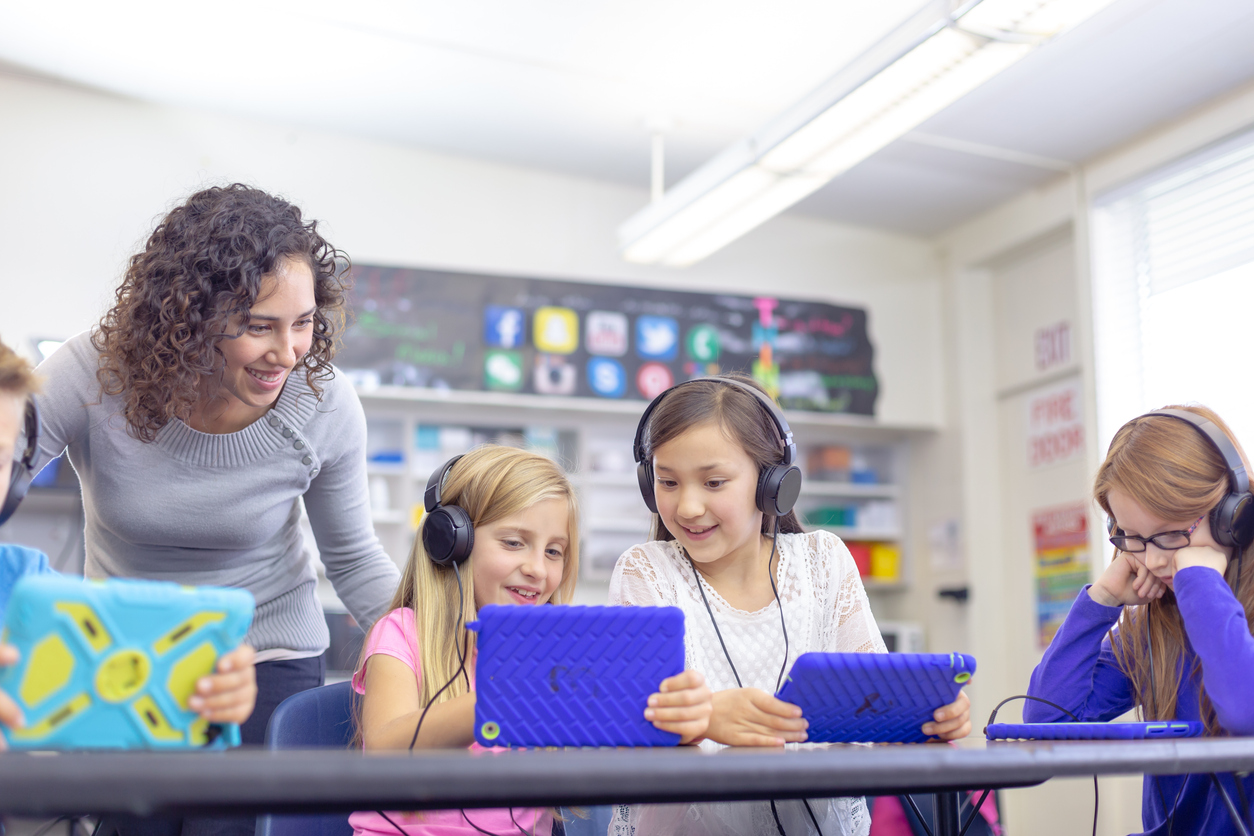Expert Primary Science Tuition Singapore for Understanding Complex Concepts
Expert Primary Science Tuition Singapore for Understanding Complex Concepts
Blog Article
A Comprehensive Guide to the Numerous Learning Approaches in Primary Scientific Research Instruction
The exploration of varied knowing methods in main scientific research instruction offers a chance for teachers to enhance student engagement and comprehension considerably. By checking out hands-on learning strategies, inquiry-based approaches, and joint strategies, we can recognize efficient practices that cater to numerous discovering styles.

Hands-On Knowing Methods
Hands-on discovering strategies play a crucial duty in main scientific research direction, involving students in active exploration and experimentation. These methods allow students to engage straight with materials and sensations, cultivating a much deeper understanding of scientific principles. By utilizing manipulatives, models, and real-life experiments, educators develop an atmosphere where students can observe, assume, and examine their concepts.
Such methods not only enhance comprehension however also grow essential reasoning and problem-solving abilities. When students join tasks like building simple makers, growing seeds, or carrying out chain reactions, they are motivated to ask concerns and look for responses via their very own observations. This experiential method helps to debunk complex scientific concepts, making them extra easily accessible and relatable.
Moreover, hands-on knowing advertises cooperation amongst peers, as trainees commonly operate in groups to perform experiments or share findings. This teamwork not only improves their discovering experience but also creates important social skills. Eventually, incorporating hands-on methods in main science direction cultivates a lifelong love of discovering and interest concerning the environment, laying a solid foundation for future scholastic quests in scientific research and beyond.
Inquiry-Based Discovering
Inquiry-based knowing is an educational method that encourages trainees to ask inquiries, examine sensations, and build their own understanding of scientific ideas. This approach shifts the focus from standard teacher-led guideline to a much more student-centered experience, where students take the initiative in their instructional journey. By promoting inquisitiveness, inquiry-based understanding promotes much deeper involvement with the product, permitting students to discover topics in a significant context.
In practice, this strategy typically entails hands-on experiments, monitorings, and critical thinking tasks that align closely with the clinical technique. Trainees are urged to create theories, style examinations, and evaluate data, which cultivates essential skills such as analytic and analytical reasoning. The duty of the instructor in this structure is to facilitate expedition, guiding students via the inquiry procedure while encouraging independent thought and cooperation.
Furthermore, inquiry-based learning nurtures a feeling of possession over the understanding procedure, motivating pupils to pursue expertise actively. This method not just boosts understanding of scientific ideas but likewise cultivates a lifelong love for discovering, outfitting students with the abilities necessary to navigate a progressively complicated globe.
Collaborative Understanding Approaches
Collaborative knowing techniques equip trainees to participate in significant interactions with peers, promoting a shared duty for their academic outcomes. In primary science guideline, these strategies encourage learners to collaborate to discover clinical principles, resolve troubles, and carry out experiments (primary science tuition Singapore). By taking part in group activities, pupils can utilize varied perspectives, enabling richer understanding and retention of clinical expertise
One secret element of collective understanding is the emphasis on interaction skills. Students have to express their ideas, pay attention actively to others, and work out concepts, every one of which are crucial expertises in both academic and real-world contexts. This social interaction not only improves their understanding of clinical concepts however likewise promotes synergy and dispute resolution skills.
When pupils see the worth of their payments within a group, they are extra likely to take ownership of their understanding trip. Overall, incorporating collective understanding methods in key scientific research direction cultivates a vibrant understanding setting that prepares trainees for future scholastic and social obstacles.
Innovation Assimilation in Scientific Research
The combination of innovation in key scientific research direction enhances discovering experiences by providing cutting-edge tools and sources that support various training methods, consisting of joint understanding - primary science tuition Singapore. Using electronic platforms, simulations, and interactive applications permits pupils to engage deeply with clinical concepts, assisting in a much more hands-on approach to knowing
Virtual labs, as an example, make it possible for learners to carry out experiments safely and effectively, advertising inquiry-based learning. These tools can simulate real-world scientific scenarios, allowing trainees to visualize complicated processes that would certainly be challenging to duplicate in a typical classroom setting. Furthermore, modern technology cultivates interaction and collaboration amongst students, as they can share findings and collaborate on tasks via on-line platforms.
Furthermore, multimedia presentations and educational video clips can enhance lessons by satisfying diverse knowing designs, making abstract ideas more easily accessible. Data analysis tools likewise empower students to collect and analyze clinical information, strengthening crucial believing skills. Overall, the calculated incorporation of innovation in main science instruction not only boosts involvement however likewise prepares pupils for a highly sophisticated society, furnishing them with vital abilities for future clinical endeavors.
Differentiated Instruction Methods
Differentiated guideline methods are essential for attending to the varied needs of students in primary scientific research education and her comment is here learning. These methods make it possible for educators to tailor their mentor approaches to fit differing abilities, rate of interests, and discovering designs within the classroom. By using set apart instruction, instructors can develop a comprehensive setting that cultivates interaction and enhances understanding of clinical ideas.
One effective approach is to use flexible grouping, which permits pupils to collaborate with peers at similar skill degrees or with differing perspectives. This approach motivates peer learning and promotes vital thinking. Additionally, using options in assignments can encourage trainees, enabling them to select jobs that reverberate with their rate of interests while still satisfying curricular purposes.
Moreover, integrating tiered jobs is another useful technique. Deliberately jobs with differing levels over at this website of complexity, educators can ensure that all trainees are properly challenged, no matter their effectiveness. Making use of developmental assessments to evaluate recognizing more makes it possible for instructors to adjust their instructional approaches dynamically, guaranteeing that each learner obtains the assistance they require.
Inevitably, executing distinguished instruction techniques in key science education not just enhances trainee knowing end results but additionally cultivates an enthusiasm for scientific research, preparing pupils for future academic searches.

Conclusion
In summary, effective key science instruction requires a complex approach that incorporates hands-on learning, inquiry-based approaches, and collective techniques. The assimilation of technology and set apart instruction additionally deals with varied understanding styles, fostering a setting favorable to exploration and essential thinking. By carrying out these methods, educators can enhance student involvement and understanding, inevitably nurturing a lifelong enthusiasm for scientific research and query. Such extensive methodologies are essential for establishing educated and interested future researchers.
The expedition of varied knowing methods in primary science guideline presents a possibility for teachers to improve trainee engagement and comprehension significantly.Hands-on understanding methods play a critical function in primary science direction, engaging pupils in energetic exploration and trial and error.Inquiry-based understanding is an educational approach that urges trainees to ask questions, investigate sensations, and create their very own understanding of scientific principles.Collaborative knowing methods empower students to involve in purposeful interactions with peers, fostering a shared responsibility for their academic end results. On the whole, incorporating joint discovering methods in key scientific research guideline cultivates a vibrant understanding atmosphere that prepares pupils for future scholastic and learn the facts here now social challenges.
Report this page